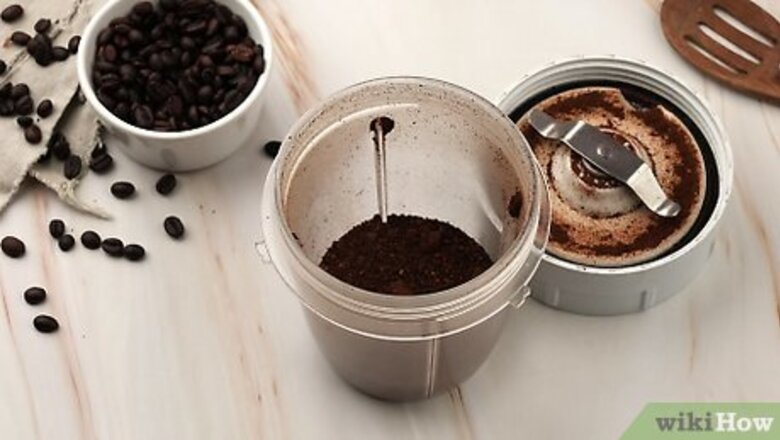
views
Grinding Mechanically
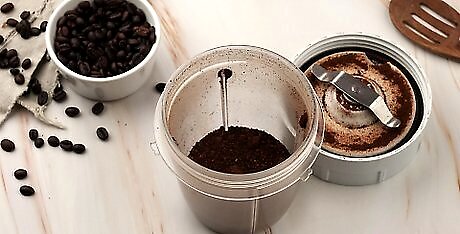
Blend the beans. Measure out a quarter of your beans and place them into the blender pitcher. Set your blender to the grind or low setting. Put on the lid and pulse the beans in two-second pulses for about 10 seconds. Add the next quarter of beans and repeat. Continue until you have the right quantity of coffee and the right consistency, about a minute. When you're done grinding, wash the blender thoroughly to remove the coffee aroma. A blender is ideal for grinding coffee in a pinch, but you won’t get a consistent or fine grind. A blender is great for achieving a coarse grind. Pulse the beans only in short bursts to prevent the blades from heating up and cooking the beans.
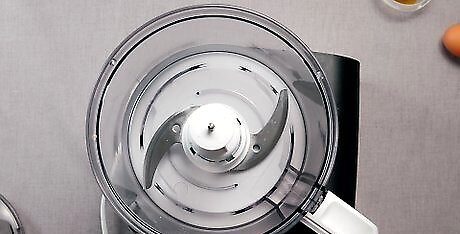
Use a food processor. Measure your coffee beans and transfer them to the food processor. Grind the beans using five-second pulses for 10 to 20 seconds. Check the consistency of the grind, and continue processing the beans in short spurts until you have the consistency you want. Disassemble and wash the food processor when you're finished, otherwise, the coffee smell will linger. Like a blender, a food processor will only give you a coarse and uneven grind, but the coffee will still be drinkable.
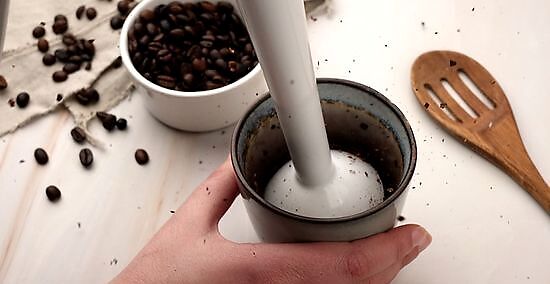
Try an immersion blender. Place the beans into a tall and narrow container. Insert the blender into the container and cover the top with your hand to prevent the beans from flying out. Blend the beans for 20 to 30 seconds. Check the grind and continue processing in 10-second spurts until you achieve the right grind. Rinse and wash the immersion blender and container right away to remove the coffee oils and scent.
Grinding Manually
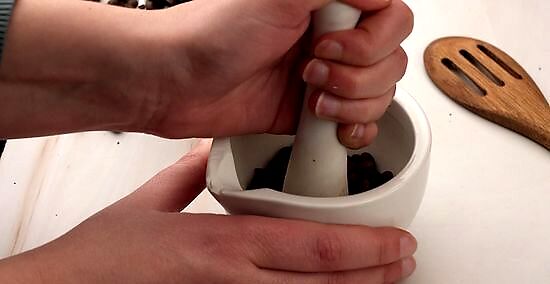
Use a pestle and mortar. Measure 1 to 2 tablespoons (5 to 10 g) of coffee beans into the mortar. Cover the top of the mortar with one hand to stop the beans from jumping out. With your other hand, swirl the pestle around to mash the beans. After five seconds, pull out the pestle and bring it down in a vertical motion to hammer the beans. Repeat the swirling and hammering until you achieve the desired consistency. Only grind small quantities of beans at a time in the pestle and mortar. This will ensure the most consistent grind. A pestle and mortar will produce anything from a coarse to a super fine grind.
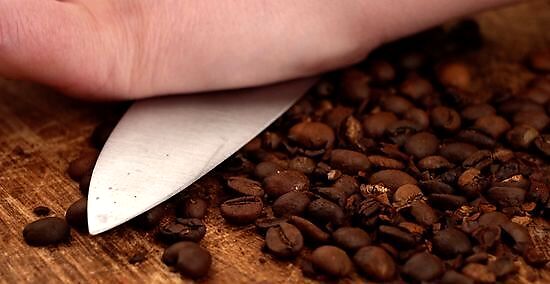
Crack them. Place the beans on a large wooden cutting board. Take a large butcher knife and lay the blade flat against the beans. Lay your open palm against the flat top of the blade and apply pressure to crack the beans. Once the beans have cracked, carefully slide the knife toward you. Continue applying pressure to grind the beans finer. Using this method, you'll be able to achieve a medium or medium-fine grind.

Grind them with a rolling pin. Measure your coffee beans and transfer them to a thick plastic freezer bag. Seal the bag and place it on a flat surface. Shake the beans around so they're in a single layer. With gentle force, bring the rolling pin down onto the beans like a hammer to crack them. Once cracked, apply pressure and roll the rolling pin back and forth until you get the right grind. You can also place the beans between sheets of parchment paper if you don’t have a freezer bag at your disposal. Using the rolling pin will result in a medium fine to fine grind.
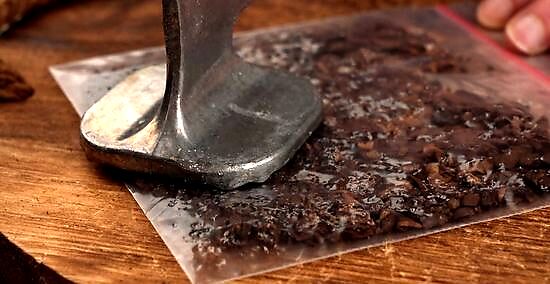
Mash them with a hammer. Place the beans between two pieces of parchment paper, or into a sealed freezer bag. Lay the bag on a towel on a flat surface and spread the beans out so they're in an even layer. Use moderate and consistent strokes to bring the hammer down on the beans to crush them. Keep hammering until you have a coarse to medium consistency. You can grind beans like this using a hammer, meat tenderizer, or mallet.
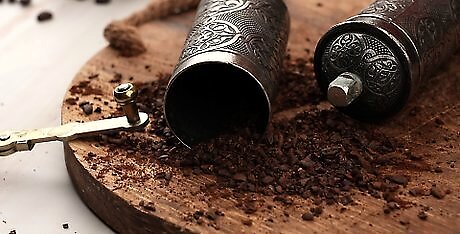
Use a hand mincer. A hand mincer is a manual grinder that can be used to mince meat, make pasta, or grind just about anything, including coffee. Measure the beans and pour them into the grinder. Turn the crank arm with your hand in a clockwise direction to process the beans. To achieve a finer grind, collect the ground beans and run them through the grinder again.
Choosing a Grind
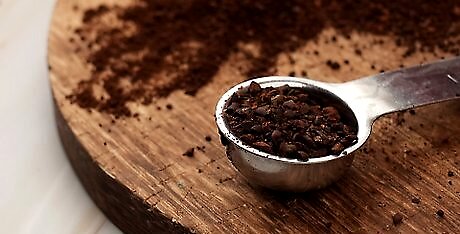
Use a coarse grind for the French press. Different coffee brewing methods require different grind consistencies. Coarsely ground coffee is about the size of breadcrumbs. You can achieve a coarse grind with a blender or food processor. This grind is ideal for: French press coffee Cold brew Vacuum coffee makers
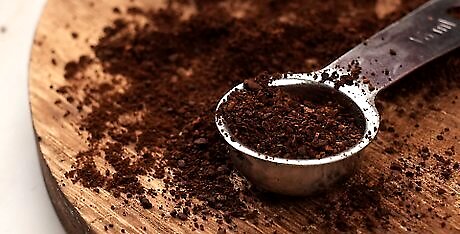
Go for a medium grind for a variety of brewing methods. A medium grind is about the consistency of granulated sugar. This type of grind is best for drip coffee, the pour-over method, and Chemex brewers. In fact, medium grind can be used for a number of different brewing methods, but shouldn’t be used for espresso or Turkish coffee. A medium grind can be achieved by cracking coffee beans with a knife or a hammer. You can also get a medium fine grind by crushing them with a rolling pin.
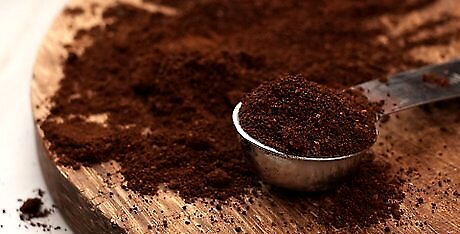
Grind coffee finely for espresso. Professional espresso machines, home espresso makers, and stovetop espresso pots all require finely ground coffee for the best results. Finely ground coffee has a similar consistency to table salt. Without a grinder, you can achieve a fine grind by grinding beans with a pestle and mortar or a rolling pin.
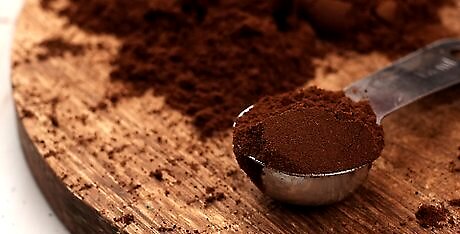
Use a super fine grind for Turkish coffee. Super fine coffee is a powdery grind that’s similar to powdered sugar. This type of grind is required for Turkish coffee and Greek coffee.You can get this grind using a pestle and mortar.

















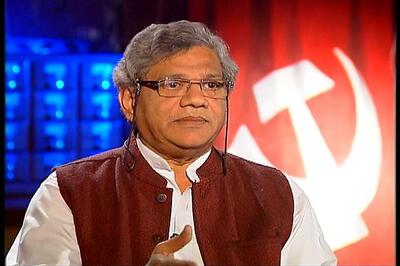


Comments
0 comment